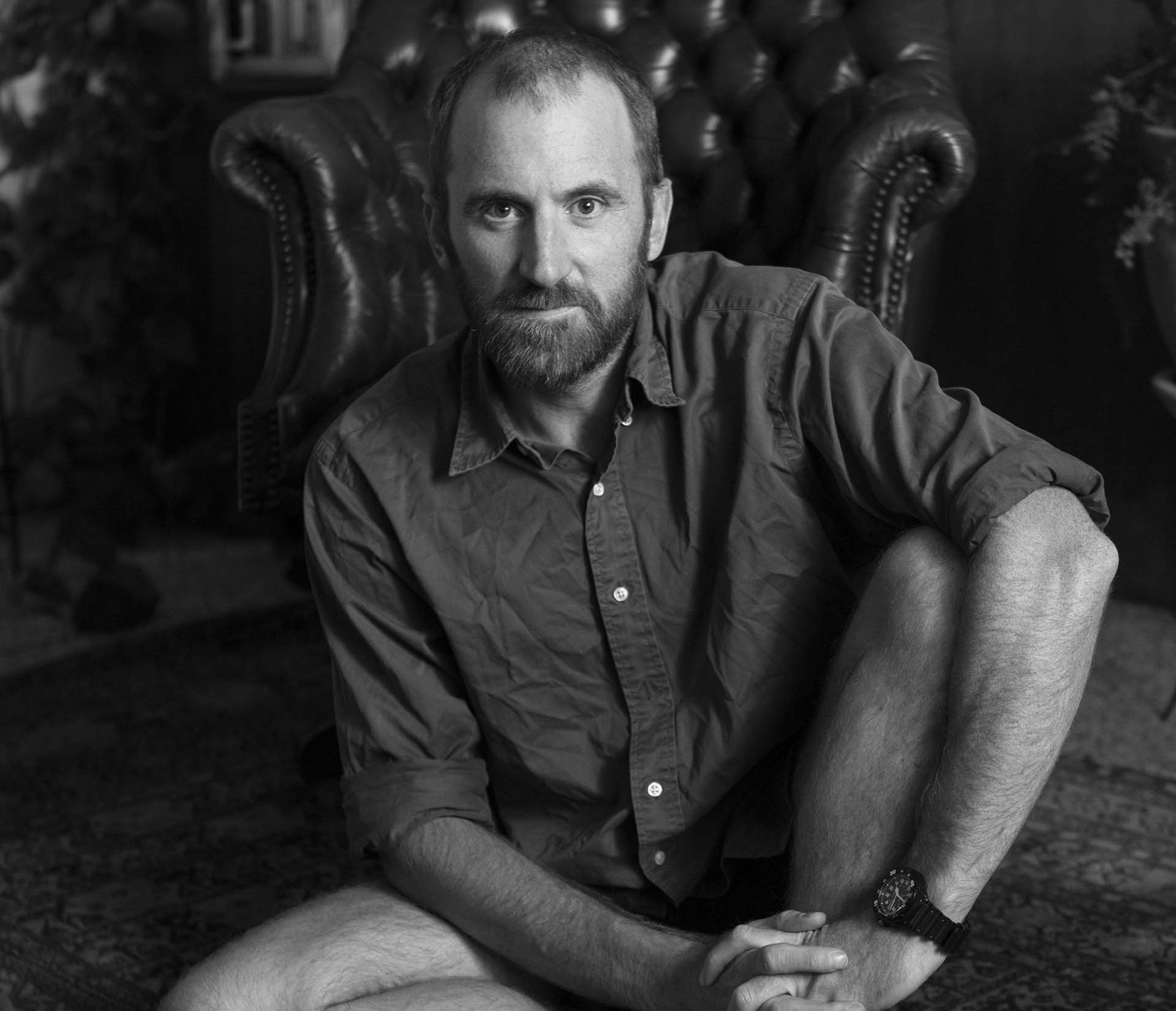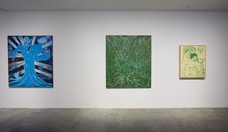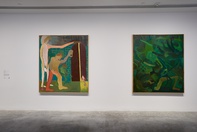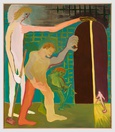Kieren Seymour
Barwon Heads, Victoria
2023
Displayed 2023 at Museum of Contemporary Art Australia

Kieren Seymour
Born 1980, London
Lives and works Barwon Heads, Victoria
Kieren Seymour is an artist using drawing and painting to explore idiosyncratic modes of representing the body, objects and space. Seymour’s works are held in several private collections across Sydney and Melbourne. His works have been included in exhibitions nationally and internationally including Zombie Eaters, Murray Art Museum Albury, New South Wales (2022); An Endless supply…, Hamish McKay Gallery, Wellington (2022); Autism, Bitcoin and The Four Seasons, Neon Parc, Melbourne (2021); Love Job, Sutton Projects, Melbourne (2018); A Global Audit: Drawing Everywhere, SACI Institute, Florence, Italy (2016); Channels, Australian Centre for Moving Image, Melbourne (2013); Wired for Melbourne, National Gallery of Victoria, Melbourne (2013); and ARTBAR: Nell (Eye for an Eye feat. Luke Sands ‘Contact lenses for Kieren’ & Go to the Devil and Shake Yourself), Museum of Contemporary Art Australia, Sydney (2012). Seymour was awarded a fellowship into the Bard MFA from the Milton Avery Graduate School of the Arts, New York (2018), and is a current PhD candidate at Deakin University, Geelong, Victoria.
Photograph: Kathleen Lee
Image courtesy the artist
Artist text
by Francis Plagne
Kieren Seymour calls his figurative paintings and drawings ‘thoughts.’ This thought is intuitive and mythical, snatched from a waking dream populated by misshapen giants, homunculi, and monstrous animals, accompanied by mundane objects such as brooms, hammers, and smartphones that, in this fantastical context, receive a curious archetypal charge. Keeping his distance from what he calls the ‘noise fields’ of contemporary art discourse, Seymour prefers to immerse himself in this idiosyncratic image-world, where an enormous gaping maw is filled with hammers, or where a multi-headed canine-hominid, enveloped in a membrane of green light, sniffs with its many noses, flanked by two stunted ghouls.
Many of Seymour’s paintings are dominated by figures, whether human, animal, or monstrously ambiguous, their physical presence emphasised by the roughly human scale of many of the canvases (often around six feet high). Bodies are anatomically distorted, with elongated limbs and oversized hands. On the left side of Trojan Bitcoin (2021), for instance, we can see how the tall nude figure’s left arm has been extended beyond conventional anatomical proportions in order to reach the desired position above the door on the other side of the picture. By choosing a different flesh tone for the elongated arm, Seymour makes his miscalculation a compositional focal point, creating an eerie Frankenstein effect as if the figure has been assembled from mismatched parts. Seymour mentions exposure to the sculptures of Alberto Giacometti as an early aesthetic revelation and, like the Swiss artist, he is alive to the psychological resonances of bodily distortion. While the wavering outlines of some of the figures can imply instability, the hypertrophic hands of many of Seymour’s creatures have a sadly comic air, suggesting stalled transformations into Hulk-like heroes, or devolution into apes.
Untrained as a painter, Seymour makes a virtue of the awkwardness of his ungainly figures, drawing inspiration from the untutored vision of outsiders like Don Van Vliet (Captain Beefheart). Yet his work also evinces a considered approach to formal elements and conventions, embracing, for instance, a multitude of contrasting approaches to pictorial space. Seymour came to painting by way of sculpture, digital art, and photography; his work in photography, which often involved elaborate studio arrangements of objects and mannequins, suggests something of the compositional thinking that goes into many of these paintings. Developed through preparatory drawings that are then scaled up and filled out with colour, the surfaces of many of Seymour’s canvases bear the traces of repeated corrections and reworkings; in fact, the laborious, at times anguished, nature of this process has recently inspired the artist to focus on drawing and improvised abstract paintings.
In subject matter, Seymour’s work is genuinely idiosyncratic, combining psychological experience with mythical figures such as the ‘World Destroyer,’ and the artist’s obsessive interest in macroeconomics and cryptocurrency. Ideas are often personified, as in the exhibition Autism, Bitcoin and the Four Seasons (2021), the title of which neatly encapsulates the very personal way in which Seymour brings together seemingly disparate dimensions of experience – psychological, economic, technological, and elemental. The specific set of reference points is Seymour’s alone, of course, but in their embedding of contemporary technologies into the historically unfixed realm of myth, we might see them as taking on a broader significance: in the words of another key influence on Seymour, Edvard Munch, these are windows into ‘the modern life of the soul.’
Artist's acknowledgements
The artist thanks Peter Knudsen, Archie Moore, Beth Scott, Kelvin Scott and Kerryn Shepherd.



